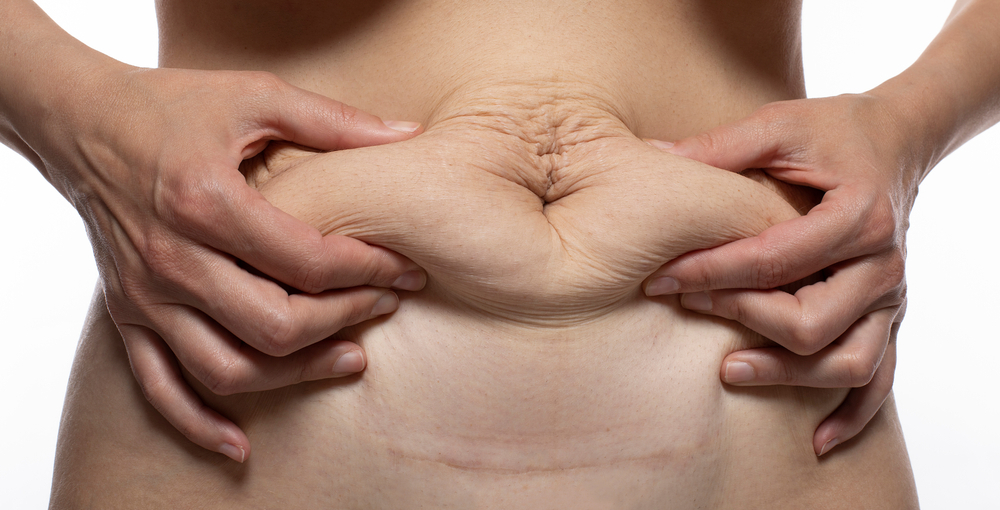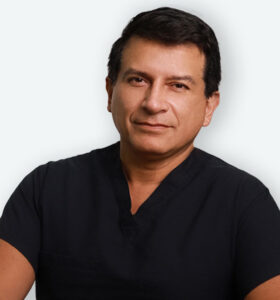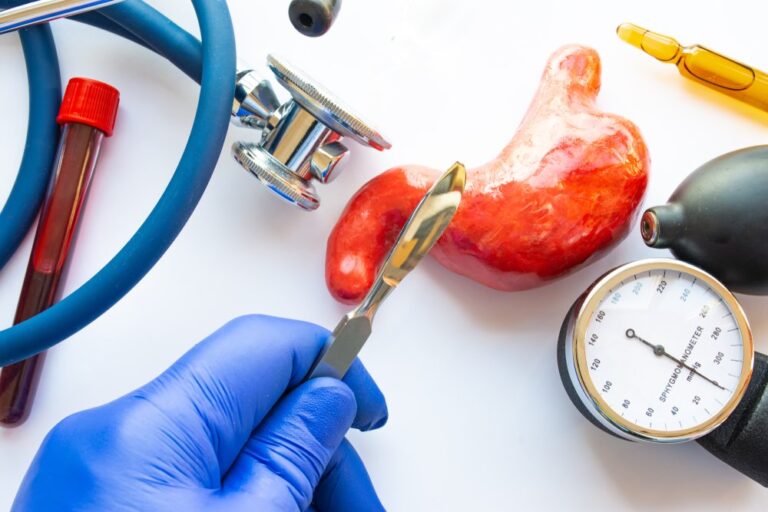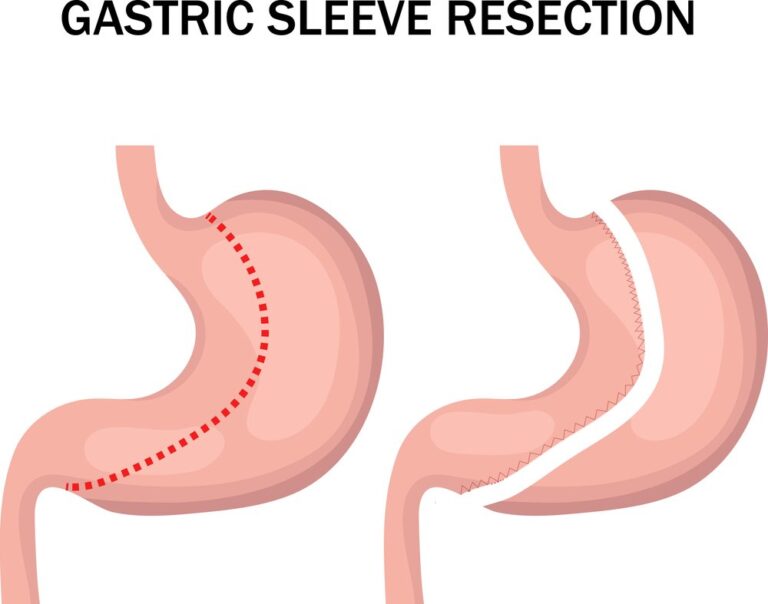Gastric sleeve surgery is a type of bariatric surgery intended to help people lose a significant amount of weight by reducing the size of the stomach, limiting food intake. After considerable weight loss from this procedure, it’s not uncommon for individuals to have excess skin and fat deposits remaining around their abdomen. This can make them feel self-conscious and may be uncomfortable or cause hygiene issues.
A tummy tuck, or abdominoplasty, is a surgical procedure that removes excess skin and fat from the abdomen and tightens the abdominal muscles. For people who have undergone gastric sleeve surgery and achieved their weight loss goals, a tummy tuck can be a good option to improve the appearance of the abdomen.
Get a $1000 Off on Gastric Sleeve in Miami
Understanding Gastric Sleeve Surgery and its Effects on the Skin
Gastric sleeve surgery, also known as sleeve gastrectomy, is a weight loss surgery that involves the removal of a large portion of the stomach, reducing its size by about 75%. This procedure helps patients with obesity to lose weight by restricting the amount of food they can consume, which in turn reduces their calorie intake. As a result, many people experience significant weight loss following the surgery. This can have various effects on the skin, some of which are discussed below:
- Loose skin: Rapid weight loss after gastric sleeve surgery can lead to loose or sagging skin, particularly in areas like the abdomen, arms, legs, and face. The skin’s elasticity and ability to retract can be affected by factors such as age, genetics, skin quality, and the amount of weight lost. In some cases, the loose skin may improve over time as the body adjusts to the new weight, while in others, it may require surgical intervention, such as body contouring procedures, to achieve the desired appearance.
- Stretch marks: Stretch marks are caused by the rapid expansion or contraction of the skin, which can lead to tears in the dermis (the middle layer of the skin). Weight loss following gastric sleeve surgery may cause existing stretch marks to become more visible or even create new ones. While stretch marks may fade over time, they do not disappear completely. Topical treatments, laser therapy, or microdermabrasion can help improve their appearance.
- Skin rashes and irritation: The folds of loose skin that can result from weight loss after gastric sleeve surgery can create an environment where moisture can accumulate, leading to skin irritation, rashes, or infections. Maintaining proper hygiene, using anti-fungal or anti-bacterial powders, and wearing moisture-wicking clothing can help prevent these issues.
- Changes in skin tone and texture: As you lose weight, you may notice changes in your skin tone and texture. This is because fat loss can affect the distribution of subcutaneous fat, which can alter the appearance of the skin. These changes might be more noticeable in areas with significant weight loss.
- Scarring: Gastric sleeve surgery can leave scarring at the incision sites, although these scars usually fade over time. In some cases, patients may choose to undergo scar revision procedures or use topical treatments to improve the appearance of their scars.
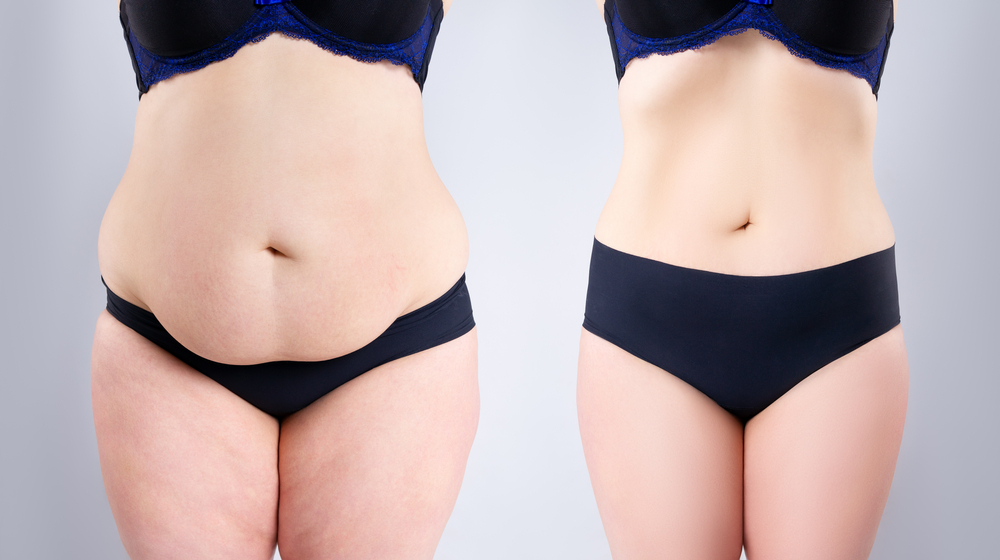
To minimize the negative effects of gastric sleeve surgery on the skin, it is essential to maintain a healthy lifestyle, including a balanced diet, regular exercise, and proper hydration. Additionally, consulting with a dermatologist or plastic surgeon can provide guidance on the best skincare regimen and possible treatments to address specific concerns related to your skin after weight loss surgery.
Changes in Skin Elasticity and Appearance After Gastric Sleeve Surgery
Sure, let’s delve a bit deeper into how gastric sleeve surgery can affect skin elasticity and appearance:
- Loss of Elasticity: One of the most noticeable changes after gastric sleeve surgery is the potential loss of skin elasticity. This happens because the skin, after being stretched for a long time due to excessive weight, may not have the ability to shrink back once the weight is lost. The degree of skin elasticity loss can depend on several factors such as age, genetics, the total amount of weight lost, and the speed at which the weight was lost.
- Loose or Sagging Skin: Reduced skin elasticity can lead to loose or sagging skin. This is especially common in areas where large amounts of fat were stored, such as the abdomen, arms, thighs, and breasts. It can also occur in the face, leading to a “deflated” appearance.
- Stretch Marks: Rapid weight loss can also lead to stretch marks, which are caused by tearing in the skin’s dermis layer. These often appear as red, purple, or silver lines and can be found in areas where the skin has stretched and shrunk rapidly.
- Changes in Skin Texture: As the body loses weight, changes in skin texture are also possible. The skin may appear less smooth or even bumpy, especially in areas of significant weight loss.
- Scarring: Since gastric sleeve surgery involves making incisions on the body, scarring is inevitable. The appearance of these scars will depend on the individual’s healing process, and while they do fade over time, they may not disappear completely.
To manage these changes and improve skin elasticity and appearance after surgery, a combination of lifestyle changes and medical interventions may be necessary. This can include maintaining a healthy diet rich in proteins and vitamins, regular exercise, staying hydrated, avoiding sun damage, and not smoking.
Explaining Tummy Tuck Surgery
This type of surgery is commonly sought by patients with sagging tissues after pregnancy or major weight loss. Here’s a step-by-step overview of the procedure:
| Step | Description |
|---|---|
| Anesthesia | Administered to ensure patient comfort during the procedure. Usually general anesthesia, but sometimes local with sedative. |
| Incisions | Surgeon creates a horizontal incision between the pubic hairline and belly button. A second one may be made around the navel if upper abdomen treatment is needed. |
| Removing excess tissue and tightening muscles | The skin is separated from the abdominal muscles which are then tightened and stitched together. The skin is then stretched down and excess is removed. |
| Repositioning the belly button | If a second incision was made, the belly button is cut from the surrounding skin and repositioned. |
| Closing the incisions | The remaining skin is sutured together. Drains might be placed under the skin to drain excess fluid or blood. The incision site is then bandaged. |
| Recovery | Recovery can take several weeks. Following the surgeon’s post-operative care instructions is critical during this period. |
Please remember this is a simplified version of the process. A real tummy tuck operation involves medical professionals and precise surgical procedures, and the patient’s individual circumstances can influence the process.
Benefits of Tummy Tuck After Gastric Sleeve
Certainly, after gastric sleeve surgery, many individuals opt for a tummy tuck for both aesthetic and functional benefits. Here are some of those benefits:
- Improved Appearance: After significant weight loss following gastric sleeve surgery, excess skin often remains. This can lead to discomfort and dissatisfaction with one’s physical appearance. A tummy tuck can remove this excess skin, resulting in a smoother, flatter abdomen.
- Increased Comfort: Excess skin can cause physical discomfort and skin conditions such as rashes and infections due to moisture and friction. By removing this skin, a tummy tuck can alleviate these issues and increase overall comfort.
- Enhanced Mobility: Loose skin can sometimes limit movement and make physical activity uncomfortable. Removing this skin can improve mobility and encourage a more active lifestyle, which is important for maintaining weight loss.
- Better Posture: After significant weight loss, your abdominal muscles might be weakened, leading to a condition called lordosis, also known as “sway back”. A tummy tuck can help correct this by tightening the abdominal muscles, which can lead to improved posture and reduced back pain.
- Boosted Self-Esteem: By improving physical appearance, a tummy tuck can significantly boost self-esteem and body confidence, leading to better mental and emotional health.
- Long-lasting Results: The results of a tummy tuck are generally long-lasting, provided you maintain a stable weight.
- Improved Exercise Performance: By removing the barrier of excess, loose skin, patients may find that they are able to exercise more easily and effectively after a tummy tuck.
- Clothing Fits Better: With a smoother abdominal area, clothes often fit better, and individuals have more clothing options.
Remember, while a tummy tuck can offer many benefits, it is a major surgical procedure with its own risks and potential complications. It is important to have a thorough consultation with a qualified plastic surgeon to discuss your individual circumstances and to understand the potential benefits and risks involved.

Assessing Skin Elasticity and Sagging
Assessing skin elasticity and sagging is a common procedure in dermatology and plastic surgery. Here’s a general overview of how it can be done:
- Visual Examination: The first step is a thorough visual examination. The healthcare provider will look for signs of sagging or loose skin, as well as the presence of wrinkles or fine lines.
- Pinch Test: This is a simple test where the healthcare provider pinches the skin and then observes how quickly it returns to its original state. The quicker it snaps back, the better the skin elasticity.
- Cutometer: This is a device used to measure skin elasticity and other properties. It works by applying a vacuum to the skin and measuring the speed at which it returns to normal after being stretched.
- Elastography: This imaging technique measures the elasticity of soft tissues by applying a mechanical pulse or vibration and then imaging the resulting motion with ultrasound or magnetic resonance imaging (MRI).
- Subjective Assessment: The patient’s perception of their skin’s elasticity and sagging can also be an important part of the assessment. This can be done through questionnaires or interviews.
- Clinical Photographs: High-quality photographs taken over time can also help assess changes in skin elasticity and sagging.
After assessing skin elasticity and sagging, a healthcare provider can recommend a suitable treatment plan, which could include lifestyle modifications, skincare products, non-invasive treatments, or surgical procedures. As with any medical procedure, it is important to discuss your individual circumstances, expectations, and potential risks with a qualified healthcare provider.
Considerations of Stable Weight and Emotional Readiness
When considering a major surgical procedure such as gastric sleeve or a tummy tuck, two key factors that need to be assessed are stable weight and emotional readiness. Here’s why these factors are crucial:
- Stable Weight: Achieving and maintaining a stable weight before surgery is vital for several reasons:
- Predictable Results: Significant weight fluctuations after surgery can affect the final results. For instance, weight gain after a tummy tuck can stretch the skin and muscles again, undermining the benefits of the surgery.
- Safety and Effectiveness: Certain surgical risks can be minimized if the patient’s weight is stable and within a healthy range. Also, if a patient is still in the process of losing weight, it’s generally better to wait until they’ve reached their goal weight to ensure the best aesthetic outcome.
- Surgical Planning: Surgeons need a stable “baseline” for planning the procedure. If a patient’s weight is fluctuating, it could potentially affect surgical decisions and outcomes.
- Emotional Readiness: Undergoing a surgical procedure can be emotionally challenging. Here’s why emotional readiness is important:
- Understanding the Procedure: Patients need to fully understand what the surgery involves, including potential risks and complications, recovery time, and what results to realistically expect.
- Coping with Recovery: The recovery period can be physically uncomfortable and emotionally challenging. Patients may experience temporary depression, changes in body image, and feelings of discomfort about their physical changes. Being emotionally prepared can help individuals better cope with these aspects of recovery.
- Maintaining Lifestyle Changes: Procedures like a gastric sleeve or tummy tuck require long-term lifestyle changes, including diet and exercise. Emotional readiness is crucial to commit to these changes.
- Managing Expectations: It’s important for patients to have realistic expectations. While these surgeries can bring significant changes, they won’t instantly solve all self-esteem or body image issues. Some people might need psychological support to fully benefit from the physical changes that these surgeries offer.
Remember, these considerations are integral to the decision-making process when contemplating a major surgical procedure. It’s always best to have these discussions with the healthcare professionals involved in your care, and potentially a mental health professional, to ensure you’re physically and emotionally ready for the journey.
Recovery Process and Results of Tummy Tuck After Gastric Sleeve
When a tummy tuck (abdominoplasty) is performed after a gastric sleeve surgery, it’s often part of a larger plan for body contouring after significant weight loss. Here’s what you can typically expect in terms of recovery and results:
| Phase | Recovery Process | Results |
|---|---|---|
| Immediate Post-Op | Abdomen bandaged, possible small tubes to drain excess fluid, wearing a compression garment. | N/A |
| First Few Days | Experience pain, swelling, and discomfort, managed with prescribed medications. Walking encouraged. | N/A |
| First Few Weeks | Gradual return to non-strenuous daily activities. No heavy lifting or strenuous activity for at least 6 weeks. | Start to see improvement in shape and appearance of the abdomen. |
| Long-Term | Complete healing may take several months. Healthy lifestyle important for maintaining results. | Flatter, firmer stomach, increased comfort and mobility, long-lasting results, scarring. |
Remember, everyone’s recovery process and results can vary based on individual factors and the specific surgical techniques used. Always follow your surgeon’s post-op instructions and reach out to them if you have any concerns during recovery.
Aesthetic Enhancement and Increased Body Confidence
Aesthetic enhancement and increased body confidence are often closely related, particularly when it comes to procedures such as a tummy tuck after gastric sleeve surgery. Here’s how they connect:
Aesthetic Enhancement
Following significant weight loss from a gastric sleeve surgery, you may find that you have excess, sagging skin around your abdomen. This is where a tummy tuck comes in. By removing this excess skin and tightening the abdominal muscles, a tummy tuck can greatly enhance the appearance of your abdomen, making it look flatter and firmer.
A tummy tuck can also improve the fit and look of clothes, allowing for greater flexibility in wardrobe choices. Many patients find that they can wear more fitted clothing or swimwear with greater confidence after the procedure.
Increased Body Confidence
The physical changes from a tummy tuck often lead to improved body image and increased body confidence. Looking better often translates into feeling better about yourself. It’s important to note, however, that while aesthetic enhancements can boost self-esteem, they are not a cure-all for body image concerns or low self-esteem.
Patients should have realistic expectations and understand that while a tummy tuck can create significant physical changes, it won’t necessarily change how you feel about your body overnight. It’s just one piece of the puzzle, and other factors such as overall health, mental health, and personal relationships also play a significant role in self-esteem and body confidence.

